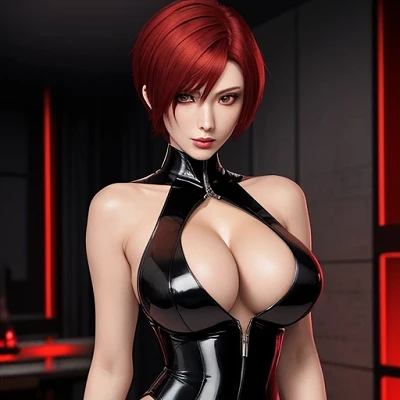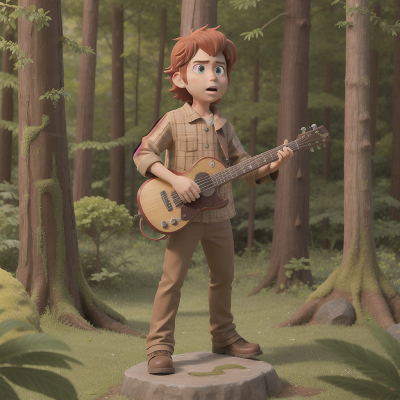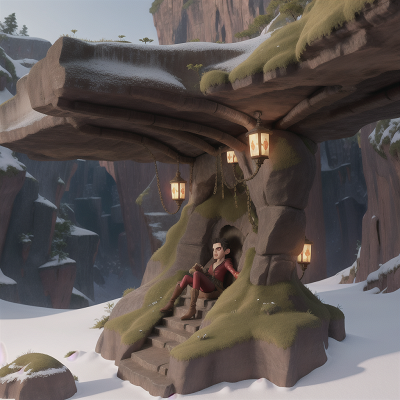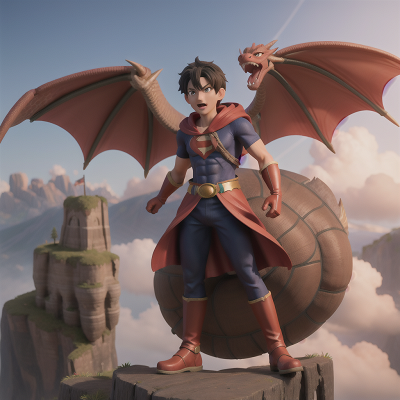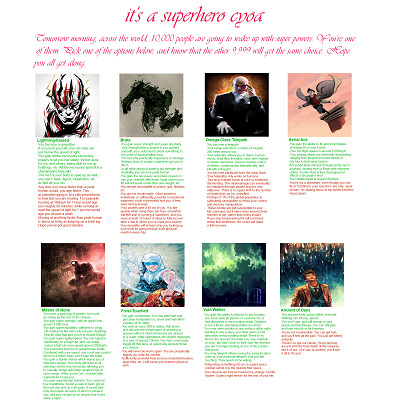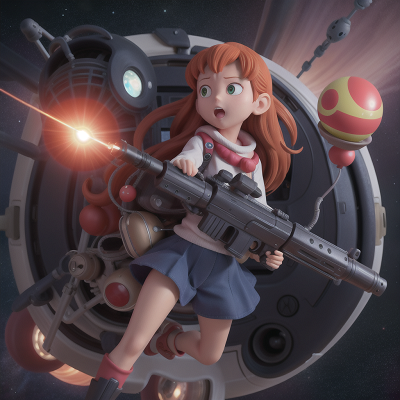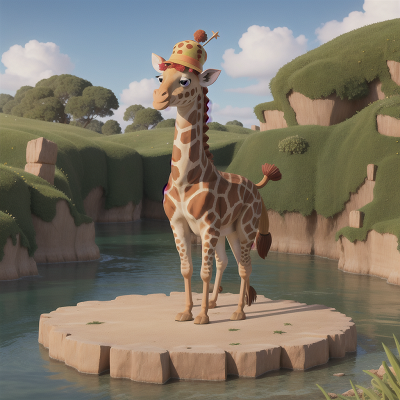Mortal Kombat - Video Game From The Early 90's
4 years ago • 5,438 Views • 6 Files
Description
Mortal Kombat is a side-scrolling fighting game. Fighting is set as one-on-one combat, allowing each player to perform a variety of punches, kicks, and special moves in order to defeat their opponent. When the opponent faces their second round loss, the winner can perform a finishing move called a "Fatality" on the loser. The Fatality is a move unique to each fighter that graphically kills the loser in a blood-soaked finale. Mortal Kombat began its life as a 2-player arcade title. It is notable for its use of digitized actors to represent the game's fighters, as well as its use of copious amounts of blood during gameplay.
Development history
It was the success of Capcom's Street Fighter II: The World Warrior that finally convinced Midway Games to let the team produce their own arcade fighting game (the genre chosen by Tobias for his game as to let him use as large digitized sprites as possible[31]), but there was not much influence by Street Fighter II on the actual project. According to Tobias, who cited 1984's Karate Champ as an actual inspiration, they even intentionally worked on making a game different than Capcom's title in every way. Besides the digitized characters that differentiated it from its contemporaries' hand-drawn ones, one stark difference was in the very high amount of blood and violence. Capcom's senior director of communications later compared Street Fighter and Mortal Kombat by asking if the interviewer preferred the "precision and depth" of Street Fighter or the "gore and comedy" of Mortal Kombat and also stated that the Street Fighter and Mortal Kombat rivalry was considered similar to the Coke and Pepsi rivalry in the 1990s.
John Tobias said that his inspirations for the game's story and characters came from the Chinese mythology and some of the stories and rumored events about the Shaolin monks. Regarding the film Big Trouble in Little China, Tobias wrote that although this movie "kind of Americanized my obsession for supernatural kung fu films from China, it was not my biggest influence. My biggest influences came from Tsui Hark films -- Zu Warriors & The Swordsman. We had to get them from bootleggers in Chicago's Chinatown." In 1995, he said about their general process of designing characters for the series: "First we figure out the type, like she or he and will she/he be big or small. Then we'll get the theme of the characters, like ninja or robot. Then we'll design the costume, and while doing that we create the storyline and how s/he fits into the universe. Then we'll find an actor that kinda resembles our character." Tobias' writing and artistic input on the series ended around 2000 following the release of Mortal Kombat 4. In 2012, he said: "I knew exactly what I was going to do with a future story. A few years ago I wrote a sort of sequel to the first MK film and an advancement to the game's mythological roots."
Jean Claude Van Damme was originally slated to play the part of Johnny Cage, but the deal fell through due to Van Damme being busy with his movie work. Johnny Cage's clothing is almost identical to that of Van Damme's character's from the 1988 movie Bloodsport. Moreover, Cage's split punch is directly taken from a move Van Damme does in the movie. The original data files for Johnny Cage still bear the name "vandamme".
According to Ed Boon in statements to EGM Magazine, the original Mortal Kombat was created by four people in just eight months from start to finish.
The original name for the character Sub-Zero was going to be Tundra.
Johnny Cage's real name is John Carlton (according to the game's storyline). The name was taken from the Midway game programmer John Carlton, who worked for the NBA Jam arcade series.
The original name for the character Johnny Cage was going to be Michael Grimm.
The original name for the character Goro was going to be Gongoro. According to John Tobias, the team decided to shorten it.
Title
The title Mortal Kombat was the idea of pinball designer Steve Ritchie,[38] a variation of the original name that had been simply Mortal Combat.[32] Since then, the series often intentionally misspells the letter "K" in place of "C" for various words containing the hard C sound. According to Boon, during the MK games' development they usually spell the words correctly and only "korrect it" when one of the developers points out they should do it.
Graphics
The characters of the original Mortal Kombat and its initial sequels were created using digitized sprites mostly based on filmed actors, as opposed to hand-drawn graphics. Early Mortal Kombat games were known for their extensive use of palette swapping, a practice of recoloring certain sprites to make them appear as different characters, which was used for the ninja characters. In fact, many of the most popular characters have originated as simple palette swaps. In the first game, the male ninja fighters were essentially the same character; only the colors of their attire, fighting stance, and special techniques marking a difference. Later games added further ninjas based on the same model, as well as several female ninja color swap characters initially also using just one base model. All of them gradually became very different characters in the following installments of the series. Eventually, Mortal Kombat 4 brought the series into 3D, replacing the digitized fighters of previous games with polygon models animated using motion capture technology.
Hidden Content
Mortal Kombat included secret characters, secret games, and other Easter eggs. Popular characters Reptile and Jade were originally introduced as hidden enemies, becoming playable after returning in subsequent games. There is also a hidden game of Pong in Mortal Kombat II, and Mortal Kombat 3 includes a hidden game of Galaga. Many extras in the series have only been accessible through very challenging, demanding, and sometimes coincidental requirements. The Sega Mega Drive/Genesis versions contains a unique finisher, named "Fergality". The Sega Mega-CD version also contained an additional code (known as the "Dad's Code"), which changed the names of the fighters to that of characters from the classic BBC comedy series Dad's Army.
Some Easter eggs originated from in-jokes between members of the development team. One example is "Toasty", which found its way into the game in the form of a small image of sound designer Dan Forden, who would appear in the corner of the screen during gameplay (after performing an uppercut) and yell the phrase "Toasty!", originating from him saying "you're toast". This egg was also the key to unlocking the hidden character Smoke when it happened in the Portal stage in Mortal Kombat II. In Mortal Kombat 4, Forden would say "Toasty! 3D!" after Scorpion did his burn Fatality, a reference to the fact that it is the first 3D game of the series. "Toasty!" is also found in Mortal Kombat: Shaolin Monks, appearing randomly after the character pulls off a chain of hits, though the picture of Forden was removed for that title, but brought back for the 2011 Mortal Kombat game. Yet another private joke was the hidden character Noob Saibot, who has appeared in various versions of the game starting with Mortal Kombat II. The character's name derived from two of the series' creators' surnames, Ed Boon and John Tobias, spelled backwards. In addition, a counter for ERMACS on the game's audits screen (ERMACS being short for error macros), was interpreted by some players as a reference to a hidden character in the original Mortal Kombat. The development team decided to turn the rumor into reality, introducing Ermac in Ultimate Mortal Kombat 3 as an unlockable secret character. The character Mokap, introduced in Mortal Kombat: Deadly Alliance, is a tribute to Carlos Pesina, who played Raiden in MK and MKII and has served as a motion capture actor for subsequent titles in the series.
Character choices
The manual states that "arcade machine statistics show that Johnny Cage is the least played character, while Sonya Blade is the most frequently chosen". This is backwards; history has proven that Johnny Cage is the most frequently chosen, while Sonya is the least.
Controversy
Mortal Kombat was one of the games Senator Joseph Lieberman centered his arguments on during the 1993 investigation by the United States Congress on extreme violence in video games. The investigation caused SEGA to develop the Video Game Council, which would later evolve to the Entertainment Standards Review Board (ESRB). Since then, even with the ESRB, video games have actually increased in violence.
ERMACS
On the diagnostics screen of the first arcade version of Mortal Kombat, there was a listing in the audit menu for "ERMACS". This led players to believe there was a hidden character called Ermac. ERMAC actually is short for "Error Macro", and no such character appears in Mortal Kombat. Midway put a scrambled message in the sequel Mortal Kombat II, which appears at the bottom of the screen after beating the game: "CEAMR ODSE NTO EXITS" (an anagram of "Ermac does not exist"), and the hidden character Jade randomly appeared right before a match with the message "Ermac Who?". For Ultimate Mortal Kombat 3, however, a new playable character called Ermac was created.
Game Boy version
Johnny Cage is missing from the Game Boy version.
Legacy
The game Mortal Kombat spawned numerous sequels, two films, a TV series, and even a cartoon.
Nimbus Terrafaux
It was rumored that there was a secret unlockable character in Mortal Kombat, called Nimbus Terrafaux. Later it was revealed to be a creation of Electronic Gaming Monthly as part of an April Fool's Day joke, despite the fact that Ed Boon had originally mentioned the character in an interview with the magazine. After this the magazine intentionally published false information on this character, complete with doctored screenshots and even a fabricated storyline.
Pre-order
Pre-orders of the console versions in the UK included a limited edition "Kombat Kit" as a give-a-way bonus. The kit included a poster, character cards, tattoo and pin-badge.
Reptile
As the story goes, on November 1992, while preparing an upgrade to fix several bugs, Ed Boon shut himself in his office for a weekend and added the secret character Reptile all by himself. However, no indication was ever given of his existence. It wasn't until a later revision of the game (which added Reptile popping up before matches to give clues of his existence in the game) and a July 1993 VideoGames Magazine article in which Boon and John Tobias specifically clarified how to find Reptile, that the mass public became aware of the existence of a character that was already in the game for months.
References
Raiden really is the Japanese God of Thunder. His appearance in myth is quite different though: he has red skin and a demonic face, his feet have two claws on them, and he carries either a wheel or drums on his back. He also is thought to eat human navels so people are advised to lie on their stomachs during storms. (from Davis, F. Hadland. Myths and Legends of Japan. New York: Dover, 1992. 1913.)
According to Ed Boon, the main characters are all caricatures of some of their favorite characters from martial arts and sci-fi movies: Kano, with his infra-red eye, is based on Arnold Schwarzenegger's make-up in The Terminator. Liu Kang is, obviously, the likeness of Bruce Lee. Raiden, the electric God of thunder, is based on the lightening-wielding character from Big Trouble in Little China. Sonya was loosely based on martial arts star Cynthia Rothrock.
PC port Technology
Because the original code was written in C, the PC port is a flawless conversion in terms of gameplay. The same bugs and tricks in the arcade coin-op are applicable in the PC version, since it was built with the same source code.
Thrill Kill
In 1998, Virgin Interactive was ready to release Thrill Kill, a gory four-player fighting game which was supposed to unseat Mortal Kombat as the goriest fighting game. The AO-rated game was never released.
Super NES Violence
This game specifically is credited for making Nintendo change their no-violence policies and generally "giving some slack" in what regards their strict content control policies. The reason: the SNES port of Mortal Kombat is censored beyond belief, almost to the point of making it a collector's item since the modifications go as far as making completely new finishing moves (Raiden burns his opponent to harmless ashes instead of making his head explode, Sub-Zero deep freezes his enemy and then breaks him instead of pulling out his spine, etc.). As a result of this Nintendo lost millions of dollars in what is arguably one of the best-selling videogames ever and missed out on a title that became a certified blockbuster in all its other incarnations (by way of comparison the [Mega Drive/]Genesis port of the game outsold the SNES port by approximately 6 to 1). Another instance of Nintendo's extreme censoring practices: in Sub-Zero's ending, his purpose for entering the tournament is the assassination of one of the characters. In the SNES version, however, the word "assassination" is changed to "destruction".
The [Megadrive/]Genesis port requires the player to input a code to get blood and some of the fatalities from the arcade version. The SEGA CD port skips this and has blood on from the get-go and all the fatalities from the arcade version.
Alternate Titles
"真人快打" -- Chinese spelling (simplified)
"Mortal Kombat Complete" -- Japanese Sega CD title
"Mortal Kombat: Competition Edition" -- SNES title
"MK" -- Common abbreviation
"Dragon Attack" -- Working title
"モータルコンバット" -- Japanese spelling
![Image For Post | **Description**
Mortal Kombat is a side-scrolling fighting game. Fighting is set as one-on-one combat, allowing each player to perform a variety of punches, kicks, and special moves in order to defeat their opponent. When the opponent faces their second round loss, the winner can perform a finishing move called a "Fatality" on the loser. The Fatality is a move unique to each fighter that graphically kills the loser in a blood-soaked finale.
Mortal Kombat began its life as a 2-player arcade title. It is notable for its use of digitized actors to represent the game's fighters, as well as its use of copious amounts of blood during gameplay.
**Development history**
It was the success of Capcom's Street Fighter II: The World Warrior that finally convinced Midway Games to let the team produce their own arcade fighting game (the genre chosen by Tobias for his game as to let him use as large digitized sprites as possible[31]), but there was not much influence by Street Fighter II on the actual project. According to Tobias, who cited 1984's Karate Champ as an actual inspiration, they even intentionally worked on making a game different than Capcom's title in every way. Besides the digitized characters that differentiated it from its contemporaries' hand-drawn ones, one stark difference was in the very high amount of blood and violence. Capcom's senior director of communications later compared Street Fighter and Mortal Kombat by asking if the interviewer preferred the "precision and depth" of Street Fighter or the "gore and comedy" of Mortal Kombat and also stated that the Street Fighter and Mortal Kombat rivalry was considered similar to the Coke and Pepsi rivalry in the 1990s.
John Tobias said that his inspirations for the game's story and characters came from the Chinese mythology and some of the stories and rumored events about the Shaolin monks. Regarding the film Big Trouble in Little China, Tobias wrote that although this movie "kind of Americanized my obsession for supernatural kung fu films from China, it was not my biggest influence. My biggest influences came from Tsui Hark films -- Zu Warriors & The Swordsman. We had to get them from bootleggers in Chicago's Chinatown." In 1995, he said about their general process of designing characters for the series: "First we figure out the type, like she or he and will she/he be big or small. Then we'll get the theme of the characters, like ninja or robot. Then we'll design the costume, and while doing that we create the storyline and how s/he fits into the universe. Then we'll find an actor that kinda resembles our character." Tobias' writing and artistic input on the series ended around 2000 following the release of Mortal Kombat 4. In 2012, he said: "I knew exactly what I was going to do with a future story. A few years ago I wrote a sort of sequel to the first MK film and an advancement to the game's mythological roots."](https://cdn.imgchest.com/files/x84apcdjd4l.png)
![Image For Post | Jean Claude Van Damme was originally slated to play the part of Johnny Cage, but the deal fell through due to Van Damme being busy with his movie work. Johnny Cage's clothing is almost identical to that of Van Damme's character's from the 1988 movie Bloodsport. Moreover, Cage's split punch is directly taken from a move Van Damme does in the movie. The original data files for Johnny Cage still bear the name "vandamme".
According to Ed Boon in statements to EGM Magazine, the original Mortal Kombat was created by four people in just eight months from start to finish.
The original name for the character Sub-Zero was going to be Tundra.
Johnny Cage's real name is John Carlton (according to the game's storyline). The name was taken from the Midway game programmer John Carlton, who worked for the NBA Jam arcade series.
The original name for the character Johnny Cage was going to be Michael Grimm.
The original name for the character Goro was going to be Gongoro. According to John Tobias, the team decided to shorten it.
**Title**
The title Mortal Kombat was the idea of pinball designer Steve Ritchie,[38] a variation of the original name that had been simply Mortal Combat.[32] Since then, the series often intentionally misspells the letter "K" in place of "C" for various words containing the hard C sound. According to Boon, during the MK games' development they usually spell the words correctly and only "korrect it" when one of the developers points out they should do it.
**Graphics**
The characters of the original Mortal Kombat and its initial sequels were created using digitized sprites mostly based on filmed actors, as opposed to hand-drawn graphics. Early Mortal Kombat games were known for their extensive use of palette swapping, a practice of recoloring certain sprites to make them appear as different characters, which was used for the ninja characters. In fact, many of the most popular characters have originated as simple palette swaps. In the first game, the male ninja fighters were essentially the same character; only the colors of their attire, fighting stance, and special techniques marking a difference. Later games added further ninjas based on the same model, as well as several female ninja color swap characters initially also using just one base model. All of them gradually became very different characters in the following installments of the series. Eventually, Mortal Kombat 4 brought the series into 3D, replacing the digitized fighters of previous games with polygon models animated using motion capture technology.](https://cdn.imgchest.com/files/ak46acaj87z.png)



![Image For Post | **References**
Raiden really is the Japanese God of Thunder. His appearance in myth is quite different though: he has red skin and a demonic face, his feet have two claws on them, and he carries either a wheel or drums on his back. He also is thought to eat human navels so people are advised to lie on their stomachs during storms. (from Davis, F. Hadland. Myths and Legends of Japan. New York: Dover, 1992. 1913.)
According to Ed Boon, the main characters are all caricatures of some of their favorite characters from martial arts and sci-fi movies: Kano, with his infra-red eye, is based on Arnold Schwarzenegger's make-up in The Terminator. Liu Kang is, obviously, the likeness of Bruce Lee. Raiden, the electric God of thunder, is based on the lightening-wielding character from Big Trouble in Little China. Sonya was loosely based on martial arts star Cynthia Rothrock.
**PC port Technology**
Because the original code was written in C, the PC port is a flawless conversion in terms of gameplay. The same bugs and tricks in the arcade coin-op are applicable in the PC version, since it was built with the same source code.
**Thrill Kill**
In 1998, Virgin Interactive was ready to release Thrill Kill, a gory four-player fighting game which was supposed to unseat Mortal Kombat as the goriest fighting game. The AO-rated game was never released.
**Super NES Violence**
This game specifically is credited for making Nintendo change their no-violence policies and generally "giving some slack" in what regards their strict content control policies. The reason: the SNES port of Mortal Kombat is censored beyond belief, almost to the point of making it a collector's item since the modifications go as far as making completely new finishing moves (Raiden burns his opponent to harmless ashes instead of making his head explode, Sub-Zero deep freezes his enemy and then breaks him instead of pulling out his spine, etc.). As a result of this Nintendo lost millions of dollars in what is arguably one of the best-selling videogames ever and missed out on a title that became a certified blockbuster in all its other incarnations (by way of comparison the [Mega Drive/]Genesis port of the game outsold the SNES port by approximately 6 to 1). Another instance of Nintendo's extreme censoring practices: in Sub-Zero's ending, his purpose for entering the tournament is the assassination of one of the characters. In the SNES version, however, the word "assassination" is changed to "destruction".
The [Megadrive/]Genesis port requires the player to input a code to get blood and some of the fatalities from the arcade version. The SEGA CD port skips this and has blood on from the get-go and all the fatalities from the arcade version.
**Alternate Titles**
"真人快打" -- Chinese spelling (simplified)
"Mortal Kombat Complete" -- Japanese Sega CD title
"Mortal Kombat: Competition Edition" -- SNES title
"MK" -- Common abbreviation
"Dragon Attack" -- Working title
"モータルコンバット" -- Japanese spelling](https://cdn.imgchest.com/files/nl4necwxa4m.jpg)
